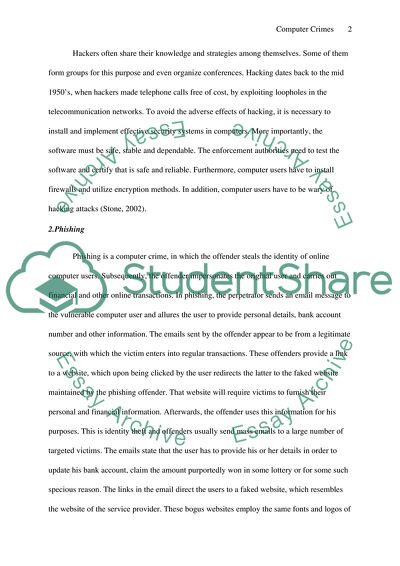Cite this document
(Computer Crimes and their Avoidance Report Example | Topics and Well Written Essays - 1750 words, n.d.)
Computer Crimes and their Avoidance Report Example | Topics and Well Written Essays - 1750 words. https://studentshare.org/information-technology/1715170-computer-crimes-and-how-to-avoid-it
Computer Crimes and their Avoidance Report Example | Topics and Well Written Essays - 1750 words. https://studentshare.org/information-technology/1715170-computer-crimes-and-how-to-avoid-it
(Computer Crimes and Their Avoidance Report Example | Topics and Well Written Essays - 1750 Words)
Computer Crimes and Their Avoidance Report Example | Topics and Well Written Essays - 1750 Words. https://studentshare.org/information-technology/1715170-computer-crimes-and-how-to-avoid-it.
Computer Crimes and Their Avoidance Report Example | Topics and Well Written Essays - 1750 Words. https://studentshare.org/information-technology/1715170-computer-crimes-and-how-to-avoid-it.
“Computer Crimes and Their Avoidance Report Example | Topics and Well Written Essays - 1750 Words”. https://studentshare.org/information-technology/1715170-computer-crimes-and-how-to-avoid-it.


